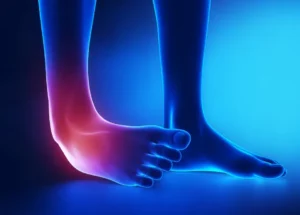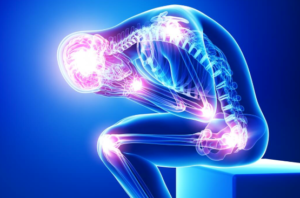Chronic back pain is a persistent discomfort that lasts, even after an initial injury or underlying cause has been treated. Unlike acute pain, which is a normal sensation that alerts us to possible injury, chronic pain is different. It can persist for months or even years, impacting daily activities and overall quality of life. Here are the causes and treatment options for chronic back pain:
Back Pain Causes
The sources of chronic back pain are varied and complex. It may begin with an acute injury, like a sprain or strain from lifting something improperly or a sudden, awkward movement. Over time, this acute issue might not heal correctly, leading to persistent discomfort.
Disc degeneration also plays a significant role. As people age, changes in the spine, such as herniated discs or spinal stenosis, may develop. A herniated disc occurs when the soft center of a spinal disc pushes through a tear in the more rigid exterior, potentially irritating nearby nerves.
Other medical conditions contribute to back pain. Arthritis, including osteoarthritis and rheumatoid arthritis, can affect the spine, causing inflammation and stiffness. Skeletal irregularities, such as scoliosis, which is a curvature of the spine, also place abnormal stress on the back. Sometimes, the exact cause of chronic pain is challenging to identify, even with thorough medical testing. The pain signals in the nervous system might remain active for weeks, months, or years without an apparent physical reason.
Treatment Options
A variety of non-surgical treatments are available to manage chronic back pain. A physical therapist may guide you through specific exercises designed to strengthen your back and abdominal muscles, which support the spine. Improving your posture and flexibility through targeted stretches is also a component of many treatment plans.
Ergonomic training focuses on modifying your workspace and daily movements to reduce strain on your back. These hands-on approaches include:
- Joint mobilization: A physical therapist uses manual techniques to move the spinal joints, aiming to reduce stiffness and improve mobility.
- Ice and heat therapy: Applying ice packs can help reduce inflammation and numb the area, while heat packs can relax muscles and increase blood flow.
In some cases, a medical provider might suggest steroid injections. These injections deliver anti-inflammatory medication directly to the source of the pain, such as near an inflamed nerve root or into the epidural space surrounding the spinal cord.
Surgery When Necessary
Surgical intervention is typically reserved for specific situations where non-operative treatments have not provided relief and a clear anatomical cause for the pain has been identified. Surgery may be used for conditions like a herniated disc that is compressing a nerve and causing significant leg pain, weakness, or numbness. Another reason for surgery is spinal stenosis, where the spinal canal narrows and puts pressure on the spinal cord and nerves.
Choosing a type of procedure depends entirely on the individual’s specific condition. The goal of surgery is to correct the structural problem, relieve nerve compression, and stabilize the spine. Recovery from back surgery requires a dedicated rehabilitation period, which includes physical therapy to regain strength and function.
Get Treated for Back Pain
Managing chronic pain involves exploring the underlying causes and finding a suitable treatment path. A healthcare professional can help you navigate these options. If you are struggling with back pain, a thorough evaluation is the first step toward developing a personalized management plan. Contact an orthopedic clinic today to schedule a consultation and discover your treatment options.














